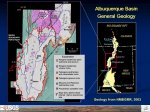aml1014
Masterpiece
Over the last few years I've been carrying large flat pieces of granite down from my local mountains with the idea of some day carving them into slabs.
Well I had some extra money yesterday and had the random thought to get at it, so I bought a nice new rock hammer.
I have yet to do any more then hit the rocks a couple times to see how it works and boy does it work, but it is loud! The noise problem has me thinking I'll only be able to do it on my days off when I'm home in the middle of the day to make some noise.
I've got lots of stones bit these are the two I'm going to start with.

@sorce called me Andy Dufrain last night lol.
Who knows maybe this will be the start to a side hobby, I already know it's going to take some time to carve these.
Aaron
Well I had some extra money yesterday and had the random thought to get at it, so I bought a nice new rock hammer.
I have yet to do any more then hit the rocks a couple times to see how it works and boy does it work, but it is loud! The noise problem has me thinking I'll only be able to do it on my days off when I'm home in the middle of the day to make some noise.
I've got lots of stones bit these are the two I'm going to start with.


@sorce called me Andy Dufrain last night lol.
Who knows maybe this will be the start to a side hobby, I already know it's going to take some time to carve these.
Aaron
Last edited:







